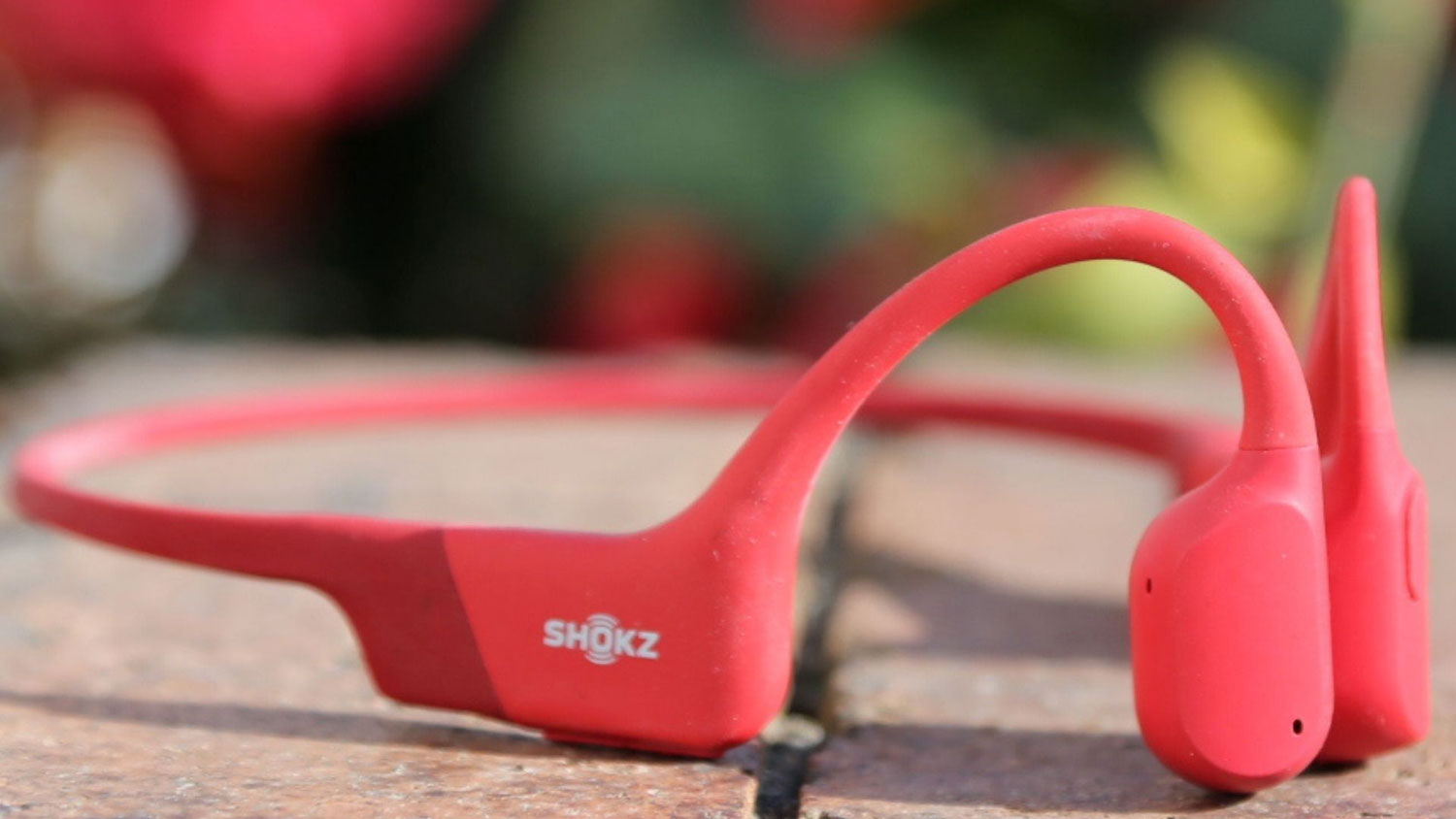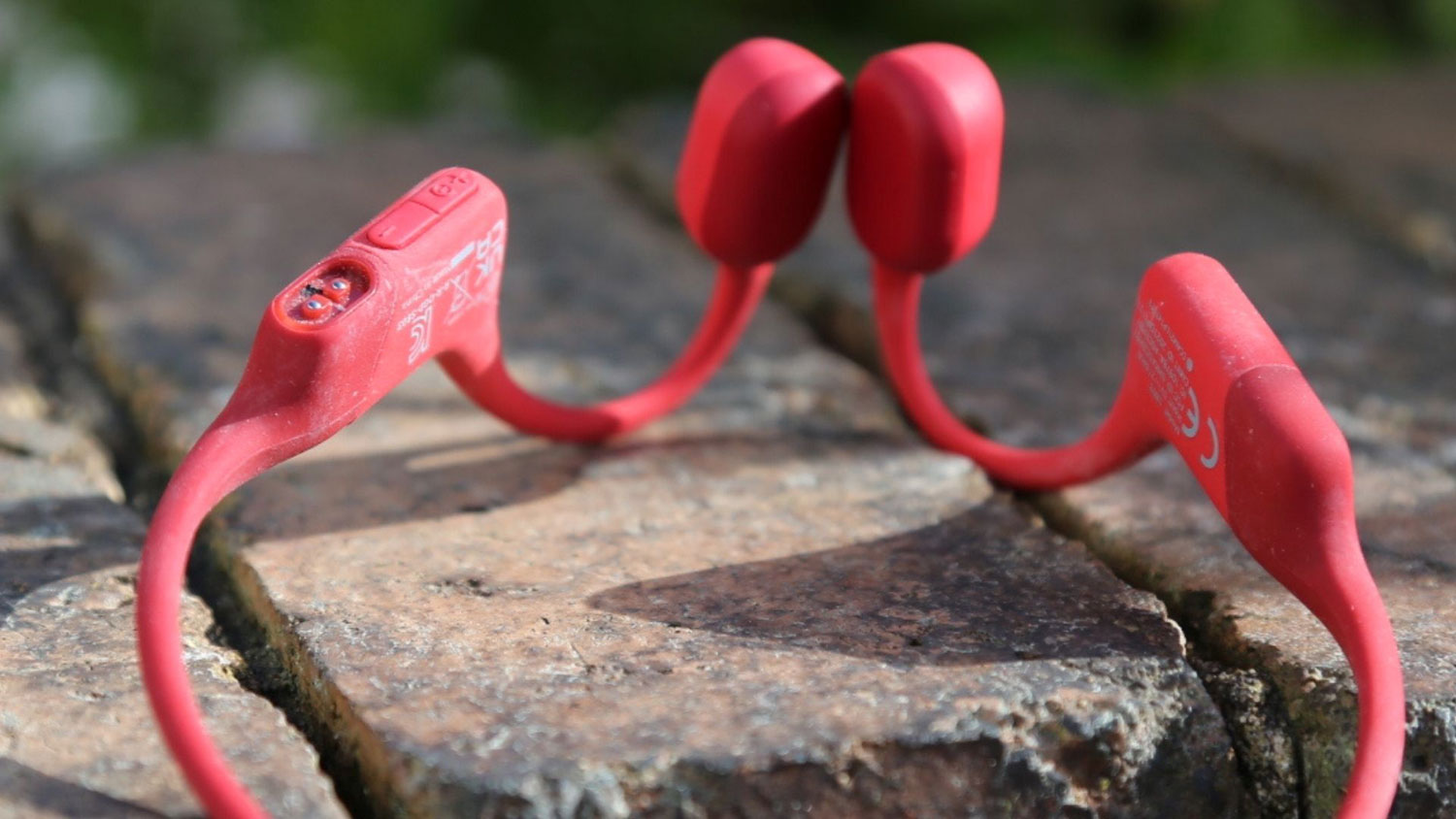Shokz OpenRun review: the lightest bone conduction headset for running and more
Formerly known as the AfterShokz Aeropex, the Shokz OpenRun is flexible, durable and great value. Here's our review


The Shokz OpenRun is an excellent value bone conduction headset. Formerly called the AfterShokz Aeropex, this flexible, durable and comfortable open-ear headset has an eight-hour battery, a quick-charge option and excellent sound quality ideal for running, the gym and even the office.
-
+
IP67-certified water-resistant
-
+
Excellent sound quality
-
+
Quick-charges in 10 minutes
-
+
Mic for hands-free calls
-
-
Small control buttons
-
-
Expensive
Why you can trust T3

The Shokz OpenRun reviewed here are from a brand virtually synonymous with the bone conduction headsets now all the rage with runners. Shokz does a dizzying array of models, from the flagship OpenRun Pro to the bare-bones OpenMove.
So how should an aspiring runner choose? Treat it like a wine list and go for the second in the pecking order, of course, which will lead you straight here to the OpenRun, a slightly pared-down version of the brand’s very best that just so happens to have everything you need, but for less cash. You can already find Shokz OpenRun in our roundup of the best bone conduction headphones, and they're also worth considering if you're looking for the best running headphones around. Let's see what all the fuss is about. Read on for my full Shokz OpenRun headphones review.
Shokz OpenRun review: price and release date
Called the AfterShokz Aeropex until a re-brand in early 2022, the Shokz OpenRun has an official price tag of $129.95 / £159.95 / AU$219 on its website. They’re available in black, red, blue and grey. A smaller variant called the Shokz OpenRun Mini is also available, which is essentially identical to the standard OpenRun model save for having a headband that’s 127mm/0.5” smaller.
Shokz OpenRun review: design and fit
Shokz OpenRun review: specs
Battery life: 8 hours
Recharging: proprietary magnetic charging cable
Weight: 26g
Bluetooth/MP3: Bluetooth
At 26g OpenRun is the lightest bone conduction headset I’ve ever seen, though only by a few grams. They look like most other pairs of bone conduction products, with two transducers that hook over ears and a headband behind. On the ears they feel a bit like wearing sunglasses, and if it’s a sunny day then you may have slight issues with trying to wear both. That said, it’s perfectly possible to run while wearing both thanks to the OpenRun’s sheer slimness and the fact that they’re covered in soft-touch silicone rubber material that easily grips to skin and hair.
During a couple of months of use I had no trouble with the OpenRun moving about while being taken for a run, though as with all bone conduction headsets the rear headband does tend to jut out slightly at the back. This isn't much of an issue when you're out for a run, but if you do decide to wear the OpenRun while wearing a hoodie or a hat that headband can get in the way. A tighter, more custom fit would be much appreciated for future iterations of bone conduction headsets, but that's not a fair criticism of this specific product.

Shokz OpenRun review: sound and features
Like all bone conduction headsets the OpenRun uses transducers rather than speakers to send sound waves directly into the inner ear along your cheekbones. Turn up the OpenRun to their highest volume setting and, yes, those around you in a quiet room will be able to hear something. You’ll also feel a slight tickle from those vibrations, which is a slightly odd sensation. However, stay away from full volume and there are no obvious downsides, with its PremiumPitch 2.0+ sonic engine providing decent bass and treble detailing (though it’s strongest in the mid-range). Sure, you don’t get the detail and all-round splendour that you’ll hear from the best wireless headphones, but OpenRun achieves a lot of musicality; they’re certainly not ‘just for podcasts’, as bone conduction headsets have traditionally been.
You can also use the OpenRun for hands-free calls since there’s a mic built-in, something that convinced me to don them for a day in my home office. They performed really well and stayed comfortable throughout an entire eight-hour shift. That’s also the extent of the battery, but in practice they lasted for a couple more hours the following day before requiring a recharge.
Get all the latest news, reviews, deals and buying guides on gorgeous tech, home and active products from the T3 experts

When using OpenRun’s you also get a lot of audible prompts and reminders; ‘welcome to Shokz, battery medium, connected!’ That’s handy because the buttons on the OpenRun – situated on a small control panel behind the right-hand ear – are rather limited (necessitating a flurry of double- and triple-presses to elicit simple actions). They’re also rather small and fiddly.
Something I wasn’t keen on was the OpenRun’s magnetic charging cable, which in my opinion is a step backwards from the USB-C slot on previous AfterShokz products. Proprietary charging cables and a bad idea because they’re too easy to lose (and, surprise surprise, they’re selling on the Shokz website).
Shokz OpenRun review: alternatives to consider
If you really want the latest and greatest bone conduction headset then go for the Shokz OpenRun Pro, which uses ninth-generation tech for slightly clearer sound, though they are very slightly heavier. If you’re a swimmer as well as a runner then consider the Shokz OpenSwim, which works well underwater in conjunction with some earbuds, though you do have to side-load MP3 files onto it (Bluetooth doesn’t work underwater).
Shokz OpenRun review: verdict

If you’re keen to get some of the best bone conduction headphones around, but can’t quite stretch to the asking price of the Shokz OpenRun Pro then consider this (only very slightly) pared-down model. Formerly called the AfterShokz Aeropex, they offer a decent eight hours of battery life and have a handy quick-charge feature that sees them go for an hour and a half on just a 10-minute charge.
The lightest bone conduction headset available, this silicone-coated flexible headband is comfortable to wear for long periods and as handy around a home office as when running. My only complaint is the provision of a magnetic charging connector that’s too easy to lose.
- Find the best running watch for your needs
Jamie is a freelance journalist, copywriter and author with 20 years' experience. He's written journalism for over 50 publications and websites and, when he's not writing, spending most of his time travelling – putting the latest travel tech through its paces.
